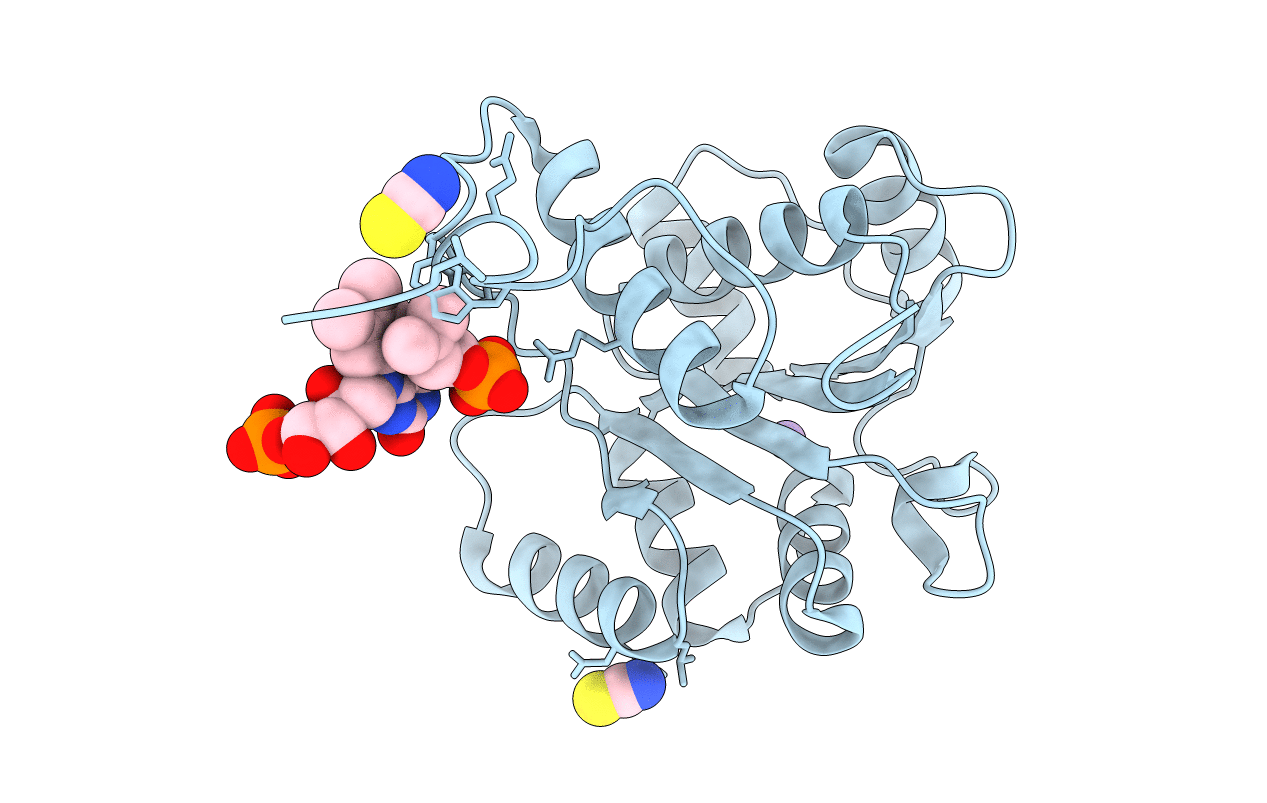
Deposition Date
2015-04-13
Release Date
2015-06-17
Last Version Date
2024-05-08
Entry Detail
PDB ID:
4ZAN
Keywords:
Title:
Structure of UbiX Y169F in complex with oxidised FMN and dimethylallyl monophosphate
Biological Source:
Source Organism:
Pseudomonas aeruginosa (Taxon ID: 287)
Host Organism:
Method Details:
Experimental Method:
Resolution:
1.76 Å
R-Value Free:
0.18
R-Value Work:
0.14
R-Value Observed:
0.14
Space Group:
F 2 3


